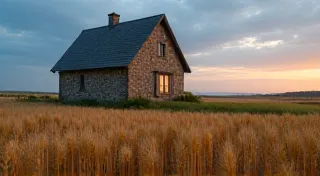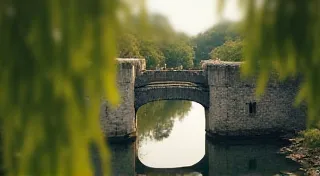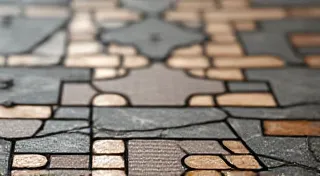Unearthing Architectural Secrets
The world is filled with magnificent structures, each a testament to human ingenuity and ambition. While iconic styles like Gothic and Renaissance rightfully command attention, countless other architecture movements have faded into obscurity, their stories largely untold. This website is dedicated to rescuing those forgotten voices, offering a glimpse into the diverse and fascinating world of historical buildings. Our goal is to illuminate architectural nuances often overlooked by mainstream historical accounts, focusing on the intricacies of design, the social forces that shaped construction, and the cultural significance woven into the built environment.
Understanding the historical context is crucial. Many structures, particularly those built during periods of colonial expansion, were deliberately designed to project power and control. Consider how Brick and Bone: How Colonial Architecture Mirrored Imperial Ambition examines how specific architectural choices – the very materials used, the scale of the buildings, the stylistic references – served to assert dominance and shape the landscape in the image of the ruling power. This wasn’t merely about constructing dwellings or administrative buildings; it was a conscious effort to visually and physically imprint the values and authority of the colonizing force upon the subjugated population. We delve into the deliberate choices architects made in replicating or subverting local building traditions, and the complex interplay of power and aesthetics that defined colonial architectural practices.
Similarly, the meticulous planning that went into construction is a fascinating field. The Cartographer’s Dream: A History of Architectural Plans uncovers the evolution of these vital documents, from rudimentary sketches to detailed blueprints, and the secrets they hold. Architectural plans are more than just technical drawings; they represent the aspirations, calculations, and compromises of the architects, engineers, and patrons involved. They reveal the interplay of artistic vision, practical constraints, and social expectations that shaped the built environment. Examining these plans offers a unique window into the creative process and the challenges faced by those who designed the buildings we admire today.
The passage of time inevitably leaves its mark on even the most imposing structures, transforming them into potent reminders of a changing world. The beauty of decay can be surprisingly profound, as evidenced by our exploration of Cathedral of Rust: The Aesthetics of Industrial Decay. The crumbling facades, the peeling paint, the encroaching vegetation – these aren't signs of neglect, but rather evidence of a layered history. They tell a story of changing economies, shifting social structures, and the relentless forces of nature. Recognizing the inherent beauty in decay requires a shift in perspective, an appreciation for the ephemeral nature of human creations.
However, it's not always about the grand scale; simple, unassuming buildings can hold just as much significance. The Ghosts in the Gable: How Vernacular Architecture Echoes Lost Lives delves into the homes and buildings created by ordinary people, uncovering the intimate details of daily life and the echoes of those who once lived within them. Vernacular architecture – the architecture of the people – is a powerful reflection of cultural identity, local traditions, and the ingenuity of ordinary individuals. These structures are often overlooked in favor of more monumental works, but they offer a more intimate and relatable connection to the past.
The Aesthetics of Ruin and Resonance
The impact of industrialization on our cities is undeniable. The Memory of Smoke: How Factories Left Their Mark on Cityscapes investigates how factories physically reshaped urban landscapes, leaving indelible marks on their surroundings and transforming the very atmosphere. The imposing silhouettes of factory chimneys, the sprawling complexes of warehouses and mills – these structures represent a pivotal era in human history, a time of unprecedented technological innovation and social upheaval. They are a reminder of the environmental consequences of industrial progress, and a testament to the resilience of communities that have adapted to changing economic realities.
Thinking about how buildings are designed often overlooks the sounds within them. The House of Echoes: Acoustic Design in Historical Buildings reveals how architects manipulated sound to create specific emotional and spiritual experiences, from the grandeur of a cathedral to the intimacy of a Victorian drawing room. Acoustics were not merely a matter of technical efficiency; they were a vital component of the overall aesthetic experience. Architects carefully considered the shape and materials of a space to optimize its sound qualities, creating environments that evoked feelings of awe, tranquility, or intimacy.
The relationship between buildings and the environment is often overlooked. Cities built along waterways have unique characteristics, as explored in The River’s Embrace: How Water Shaped Medieval Urban Planning. Rivers were not merely sources of water; they were vital arteries of commerce, transportation, and communication. Medieval cities grew up around rivers, their layout and design dictated by the river’s course and its impact on the surrounding landscape. The study of riverine urban planning reveals a fascinating interplay between human ingenuity and the power of nature.
The Poetry of Concrete and the Principles of Zen
Certain movements have been unfairly maligned, their contributions misunderstood. “Concrete Dreams: Brutalism’s Misunderstood Poetry” seeks to re-evaluate the often-criticized Brutalist style, revealing the underlying philosophies and artistic intentions behind its imposing concrete forms. Brutalism, with its raw concrete surfaces and monumental scale, has often been dismissed as cold and impersonal. However, a closer examination reveals a style that sought to express a sense of honesty, functionality, and social responsibility. It’s a testament to the power of architecture to challenge conventional aesthetics and to provoke a dialogue about the built environment.
Across the globe, The Silent Testimony: How Japanese Pagodas Reflect Zen Principles demonstrates how Japanese Pagodas embody principles of balance, harmony, and simplicity, linking architecture to spiritual practice. The pagoda’s tiered structure, its elegant proportions, and its use of natural materials all reflect the Zen Buddhist emphasis on mindfulness, contemplation, and the interconnectedness of all things. These structures are not merely buildings; they are expressions of a profound spiritual philosophy.
The artistry and skill involved in building these structures, and the loss of those traditional techniques, are poignant, highlighted by The Echo of Hammers: Craftsmanship’s Vanishing Legacy. The decline of traditional building trades represents a significant loss of cultural heritage. The knowledge and skills passed down through generations are disappearing, threatening to sever our connection to the past. Preserving these crafts requires a concerted effort to promote apprenticeship programs, support artisan communities, and recognize the value of traditional building techniques.
The Dance of Shadow and the Geometry of Loss
The manipulation of light is a fundamental aspect of architectural design. “The Language of Light: How Romanesque Architecture Used Shadow” explores how Romanesque architects masterfully employed light and shadow to create a sense of awe and spiritual transcendence. The interplay of light and shadow can transform a space, creating an atmosphere of mystery, drama, or serenity. Romanesque architects understood the power of light to evoke emotions and to shape perceptions.
Even the most seemingly ordinary buildings can hold profound meaning, particularly those built to commemorate loss, as examined in The Geometry of Grief: Mausoleums as Architectural Poetry. Mausoleums are not merely repositories for the dead; they are expressions of grief, remembrance, and cultural identity. The design of a mausoleum can reveal a great deal about the values and beliefs of the society that built it.
Preserving the Past: Archives and the Blueprint of Civilization
The preservation of architectural plans and archival records is essential for understanding the evolution of the built environment. These documents offer a unique window into the creative process and the challenges faced by architects and engineers throughout history. They provide invaluable insights into the technical innovations, social contexts, and aesthetic sensibilities that shaped the buildings we admire today. We discuss the importance of digitizing these records and making them accessible to researchers, students, and the public.
Looking Ahead: Sustainable Design and the Lessons of the Past
As we look to the future of architecture, it is crucial to learn from the successes and failures of the past. Sustainable design principles, energy efficiency, and the use of local materials are essential for creating buildings that are both beautiful and environmentally responsible. The traditional building techniques and design philosophies of vernacular architecture can offer valuable inspiration for creating buildings that are adapted to their climate and context. We're exploring the intersection of historical preservation and modern design, encouraging a dialogue about how we can create buildings that are both rooted in tradition and responsive to the challenges of the 21st century.


















